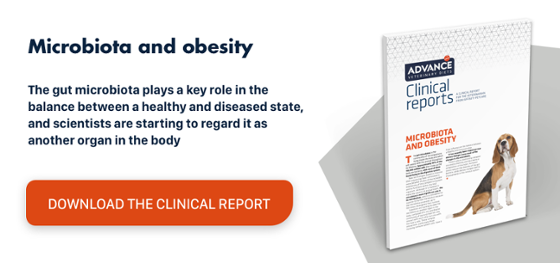Why do obese cats develop insulin resistance?
Metabolic syndrome has been studied extensively in human medicine and is associated with very high rates of mortality and morbidity. It is directly related to a sedentary lifestyle and poor dietary habits, while its prevalence continues to rise in developed countries. Weight gain and the accumulation of too much fat can trigger serious secondary diseases in cats. Beyond the observable mechanical and cutaneous clinical signs, recent evidence suggests that an increase in oxidative stress due to the accumulation of adipocytes creates a proinflammatory state in obese cats called metabolic syndrome.
The development of metabolic syndrome is often reported in obese cats. This short video illustrates the pathological mechanisms of obesity that lead to insulin resistance, lameness and other problems.
From increased adipocytes to a decline in insulin sensitivity
As cats gain weight, their overall body composition changes as they accumulate a higher proportion of body fat. The accumulation of adipocytes generates large deposits of fat that obstruct blood supply and cause cellular hypoxia in the tissues. This leads to the infiltration of macrophages which release inflammatory mediators, thus generating a proinflammatory state in the cat which involves:
- increased expression of inflammatory cytokines (TNF-α, IL-6);
- reduced expression of anti-inflammatory adiponectin in adipose tissue; and
- higher plasma concentration of acute-phase proteins (α-1 glycoprotein and haptoglobin).
This inflammatory state may explain the reduction in insulin sensitivity. Every kilo gained by a cat corresponds to a 30% reduction in insulin sensitivity.
Insulin resistance and hyperglycaemia
When cats develop insulin resistance, the cells in various tissues cannot absorb glucose from the bloodstream, which leads to a hyperglycaemic state.
In turn, the circulating insulin induces lipid hydrolysis, thereby forming glycerol and fatty acids which accumulate in the blood as cholesterol, triglycerides and phospholipids. This situation is known as metabolic syndrome.
Metabolic syndrome multiplies the risk of diabetes by a factor of 5.
How can we reverse insulin resistance and metabolic syndrome?
The first and most important step is to implement a weight-loss plan for the cat. This will involve strategies for increasing caloric expenditure coupled with dietary changes.
A weight-loss diet tailored to the needs of obese cats features an energy restriction of 20–30%, a high-protein, low-fat content, natural fibres and a balanced nutrient profile. It helps maintain lean muscle mass, while also enhancing the feeling of satiety.
The addition of a metabolic booster in the form of citrus flavonoid supplementation has produced significant improvements in oxidative stress markers, inflammatory markers and the lipid profile.
Weight loss helps protect against diabetes, since it normalises insulin sensitivity. The Affinity Petcare R&D department has reported significant improvements in glucose metabolism markers (18% reduction in fructosamine, 40% reduction in basal insulin and 21% amylase reduction) after just 3 weeks of treatment with the Advance Veterinary Diets Obesity diet.
Finally, it is important to stimulate the cat’s natural behavioural instincts and therefore encourage physical activity. Environments that allow cats to climb and play promote exercise. Read more about environmental enrichment in this previous post.

